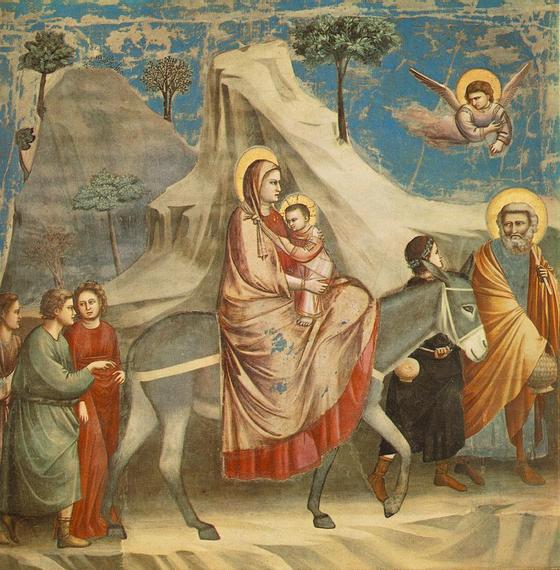The child from whom Christians take their name was not born at home. He was born, as so many beloved Christmas carols have it, in a manger, a stable, a place where livestock were sheltered. His parents fled with him, fled violence and the killing of their son. They found refuge later, but Jesus left his parents' home, as he called his disciples to do. Christians share a story of a refugee family, but when they come to speak of the communities of faith in which they now live and practice their belief, they speak of Churches - of buildings, of stone and wood and glass, not refugees.
And yet, those "Churches" had not always had buildings. They had not always been a place. Each began as a people. The oldest church buildings postdate the origins of Christianity by centuries. The apostles moved from one isolated group of people to another, carrying orally Jesus's teachings. Ever since, "Apostolic" Christianity has evoked an itinerant life - for the earliest Irish monks, for St. Francis and St. Dominic, for St. Ignatius, and for the missionaries who spread out around the globe in the sixteenth century.
Medieval Europe built churches, thousands of buildings dotting the landscape, one of the many ways that European rulers sought to make their lands Christian. By the end of the fifteenth century, the kingdoms of England, France, Hungary, Spain, and Portugal had all sought to make their domains - the very land itself - Christian. But those efforts failed. The utter erasure of synagogues, the conversion of mosques into church buildings could not penetrate the hearts of their subjects, unknown numbers of whom continued to practice what they held to be true, clandestinely if necessary, by leaving the lands that sought to enforce homogeneous Christianity. The cities that became great in Europe in the seventeen and eighteenth century offered haven to those who fled. Refugees of great knowledge, talent, and skill all moved, expelled by monarchs seeking to blend religious and political dominion, and found refuge in places such as Amsterdam, London, Berlin - cities that became metropolises.
In the sixteenth century, that same pursuit of religious uniformity drove European Christians from their homes in the thousands - some estimate in the tens of thousands. Although we tell the story of the Reformation as one of fragmentation or the "foundation" of "Churches," in many places, those Churches - the Lutheran Church, the Reformed Church, the Catholic Church, Anabaptist, Mennonite, Socinian - did not have a church, a building so designated, in which to worship. They gathered, as early Christians had done, in fields and homes, in gardens and cellars. By the time European powers came to sign the Peace of Westphalia, they legally recognized the existence of "Confessions," professions of faith that were different from those of the rulers. They acknowledged legally, in a binding peace treaty, the failure of a pursuit of a homogeneous Christianity.
Much has been lost in the ways we tell the history of the Reformation. Martin Luther, John Calvin, John Knox - the "founders" of "Churches" - all fled persecution, all were refugees. Some, like Luther, found refuge, but others, like Calvin, were exiles their entire lives. "Exile" was a physical fact for thousands of Europeans, beginning with Jews in the thirteenth century, and coming to encompass Christians who did not agree with the Christianity of their rulers. Exilic communities rethought the relationship between religion and place, between their faith and the land of their birth, between their God and the land in which they could worship him. Exile and refuge were physical experiences. In the sixteenth century, they led Christians to return to the ancient words, "where two or three are gathered in my name, I am there among them" (Mt. 18:20, NRSV), and to take up Abraham and Moses as models for their own lives - to ask whether Europe was the promised land or Egypt, a place of slavery and persecution.
